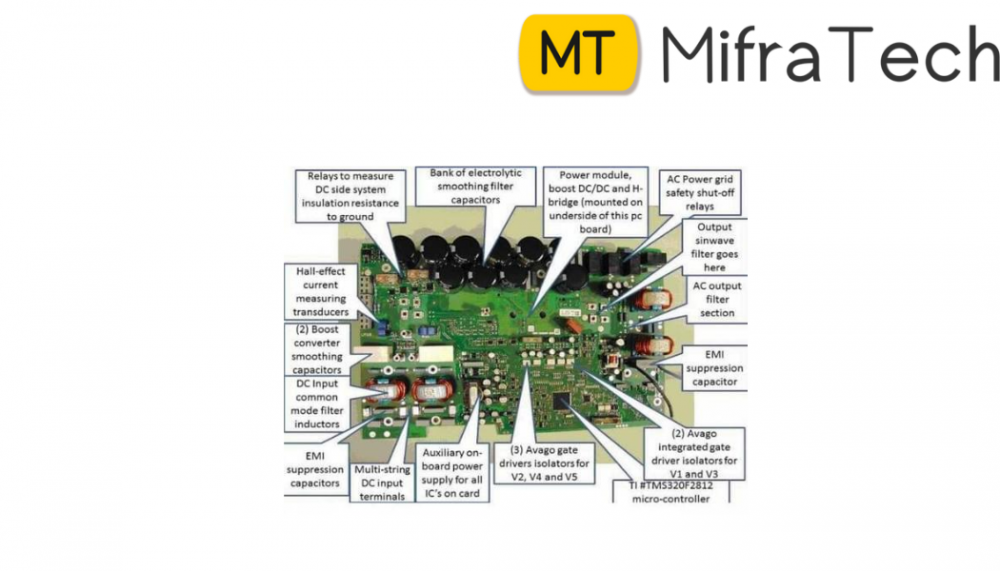
Abstract—
When no transformer is used in a grid-connected photovoltaic (PV) system, a galvanic connection between the grid and the PV array exists. In these conditions, dangerous leakage currents (common-mode currents) can appear through the stray capacitance between the PV array and the ground. In order to avoid these leakage currents, different inverter topologies that generate no varying common-mode voltages, such as the half-bridge and the bipolar pulse width modulation (PWM) full-bridge topologies, have been proposed. The need of a high-input voltage represents an important drawback of the half-bridge. The bipolar PWM full bridge requires a lower input voltage but exhibits a low efficiency. This letter proposes a new high-efficiency topology that generates no varying common-mode voltage and requires the same low-input voltage as the bipolar PWM full bridge. The proposed topology has been verified in a 5-kW prototype with satisfactory
hhbsjs
............Introduction/ literature survey
Grid-Connected photovoltaic (PV) systems, particularly low-power single-phase systems (up to 5 kW), are becoming more important worldwide. They are usually private systems where the owner tries to get the maximum system profitability. Issues such as reliability, high efficiency, small size and weight, and low price are of great importance to the conversion stage of the PV system [1]–[3]. Quite often, these grid-connected PV systems include a line transformer in the power-conversion stage, which guarantees galvanic isolation between the grid and the PV system, thus providing personal protection. Furthermore, it strongly reduces the leakage currents between the PV system and the ground, ensures that no continuous current is injected into the grid, and can be used to increase the inverter output voltage level [1], [2], [4]. The line transformer makes possible the use of a full-bridge inverter with unipolar pulse width modulation (PWM). The inverter is simple. It requires only four insulated gate bipolar transistors (IGBTs) and has a good trade-off between efficiency, complexity and price [5]. Due to its low frequency, the line transformer is large, heavy and expensive. Technological evolution has made possible the implementation, within the inverters, of both ground-fault detection systems and solutions to avoid injecting dc current into the grid. The transformer can then be eliminated without impacting system characteristics related to personal safety and grid integration [1], [4], [6]–[8]. In addition, the use of a string of PV modules allows maximum power point (MPP) voltages large enough to avoid boosting voltages in the conversion stage. This conversion stage can then consist of a simple buck inverter, with no need of a transformer or boost dc–dc converter, and it is simpler and more efficient. But if no boost dc–dc converter is used, the power fluctuation causes a voltage ripple in the PV side at double the line frequency. This in turn causes a small reduction in the average power generated by the PV arrays due to the variations around the MPP. In order to limit the reduction, a larger input capacitor must be used. Typical values of 2 mF for this capacitor limit the reduction in the MPPT efficiency to 1% in a 5-KW PV system [8]. However, when no transformer is used, a galvanic connection between the grid and the PV array exists. Dangerous leakage currents (common-mode currents) can flow through the large stray capacitance between the PV array and the ground if the inverter generates a varying common-mode voltage [1], [4]. A topology that generates no variable common-mode voltage is the half-bridge family of inverters, with two, three or more levels [1], [4], [8], [9]. The main drawback is the need of highinput voltages (greater than, approximately, 700 V for European applications), which involves the use of either a large PV string or a previous boost dc–dc stage [4], [9]. The full-bridge topology requires half of the input voltage demanded by the half-bridge topology, that is, around 350 V for European applications. In order to avoid a varying common-mode voltage, the full bridge has to be modulated with bipolar PWM, a modulation strategy that leads the converter to a low efficiency and a high current ripple [5]. This letter proposes a new topology that generates no varying common-mode voltage, requires the same low-input voltage as the bipolar PWM full-bridge topology, and achieves a higher efficiency and a lower current ripple in the inductor. The topology consists of six switches and two diodes and can be an advantageous power conversion stage for transformer less grid-connected PV systems.
Engineering project on embedded system
Latest engineering topic in electronics and communication engineering
Project ideas and explanation on project
Top 100+ iot projects
Best electronics projects
Projects centre in vijayanagara
Best engineering projects
Computer science with machine learning projects